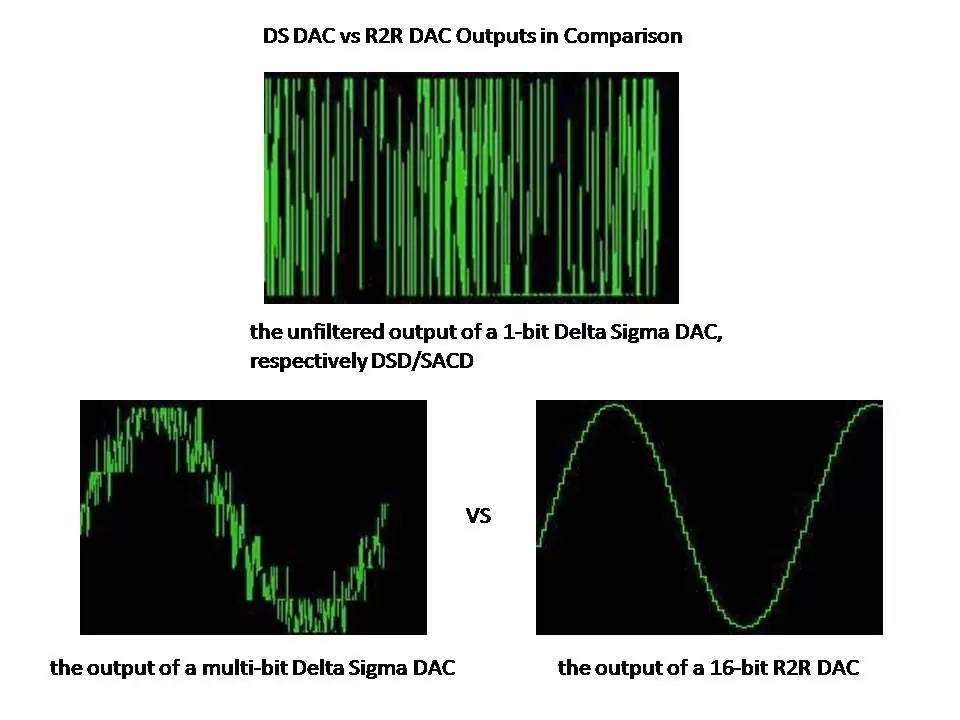solderdude
Grand Contributor
That modification is in small and high frequency range and is basically noise. No signal is no quantization noise.Yup - appreciate all that. I'm not worried if it's audible or not, I'm talking theoretically here. I just don't understand why quantizing is creating "noise" when in my head it's just modifying the original signal.
It appears in the DAC because it only 'knows' the values of the samples. Not what is in between them.What is constructing the red noise line in Monty's chart? The only thing that knows about the quantization error is the ADC, so how does it ever appear in the DAC?
In NOS R2R DAC's there are actual stair-steps with substantial quantization crap (noise) that is not filtered at all.
In OS R2R DACs there are smaller errors (noise) because intermediate samples are calculated (filters) and frequency of that noise is higher up as the steps are smaller and shorter.
In those DACs there actually is noise that is determined by the frequencies present and amplitudes.
There usually is a post filter that filters out the ultra-high frequencies but lower frequencies (most of them above the audible range) are still there.

With DS there are just a few bits (4 to 7) and by calculation the actual intended sample value (and all calculate in-between values) are obtained by an 'average' of the few actual bit values it toggles between (at a very, very high frequency). This creates a lot of noise, high in amplitude (coarse bit values) and very high frequency.
That noise is 'shaped' and most of it is above the audible range.
The ultra-high frequency crap is easily filtered with a simple post filter which prevents MHz crap to be at the analog out.
The left bottom scope shot is what is coming out of a DS DAC before the highest frequencies are filtered out by the post filter. Thus you end up with a 'clean' signal which still has a very small amount of noise in it created by quantization errors of the 'just a few bit' DAC. Most of it well above the audible range.
Last edited:


